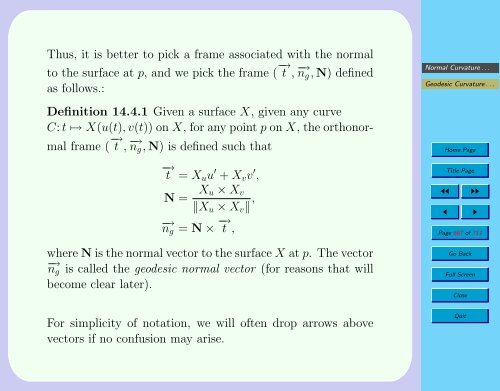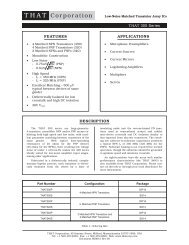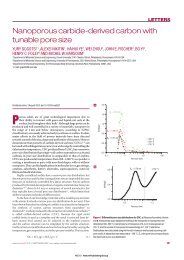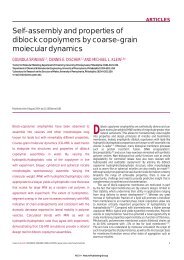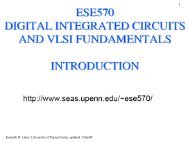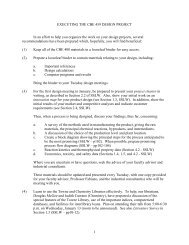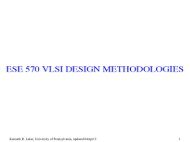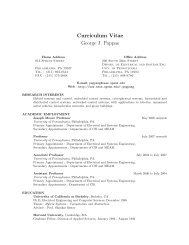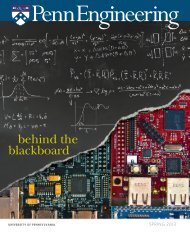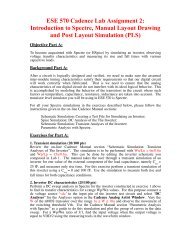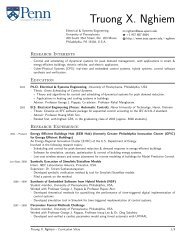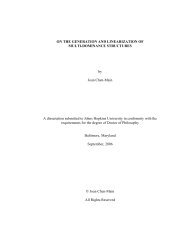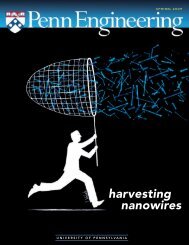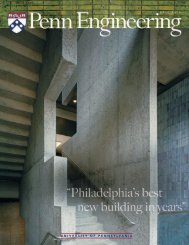14.4. Normal Curvature and the Second Fun- damental Form
14.4. Normal Curvature and the Second Fun- damental Form
14.4. Normal Curvature and the Second Fun- damental Form
You also want an ePaper? Increase the reach of your titles
YUMPU automatically turns print PDFs into web optimized ePapers that Google loves.
Thus, it is better to pick a frame associated with <strong>the</strong> normal<br />
to <strong>the</strong> surface at p, <strong>and</strong> we pick <strong>the</strong> frame ( −→ t , −→ n g , N) defined<br />
as follows.:<br />
Definition <strong>14.4.</strong>1 Given a surface X, given any curve<br />
C: t ↦→ X(u(t), v(t)) on X, for any point p on X, <strong>the</strong> orthonormal<br />
frame ( −→ t , −→ n g , N) is defined such that<br />
<strong>Normal</strong> <strong>Curvature</strong> . . .<br />
Geodesic <strong>Curvature</strong> . . .<br />
Home Page<br />
−→ t = Xu u ′ + X v v ′ ,<br />
N =<br />
X u × X v<br />
‖X u × X v ‖ ,<br />
−→ ng = N × −→ t ,<br />
where N is <strong>the</strong> normal vector to <strong>the</strong> surface X at p. The vector<br />
−→ ng is called <strong>the</strong> geodesic normal vector (for reasons that will<br />
become clear later).<br />
Title Page<br />
◭◭ ◮◮<br />
◭<br />
◮<br />
Page 687 of 711<br />
Go Back<br />
Full Screen<br />
Close<br />
For simplicity of notation, we will often drop arrows above<br />
vectors if no confusion may arise.<br />
Quit


